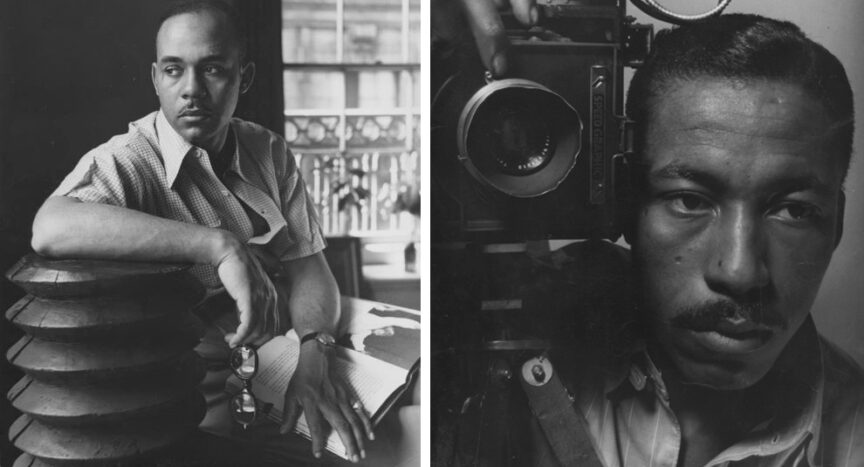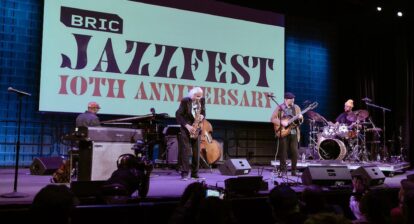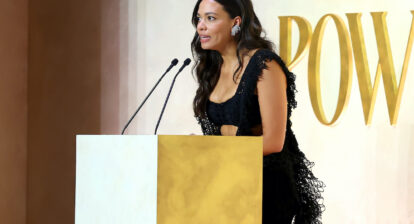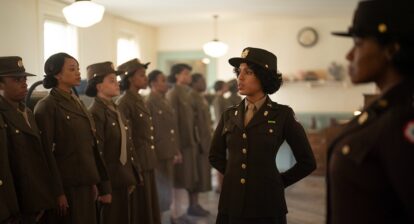Ralph Ellison’s widely acclaimed 1952 novel Invisible Man, published when he was 38, stood as the crowning achievement of his life. When Random House released his unfinished posthumous novel, Juneteenth, in 1999, the publication of more of his unearthed genius became a literary event. As luck would have it, there’s even more to the unseen artistry of Ellison.
Ralph Ellison: Photographer, an exhibition on view at The Gordon Parks Foundation Gallery from December 11 to February 7, showcases images taken by Ellison of 1940s New York City under the mentorship of his dear friend, the ultimately legendary Gordon Parks.
James Baldwin famously penned seminal essay collections, novels, plays and one unsung book of poetry. Gordon Parks—arguably the preeminent Black renaissance man of the 20th century—produced photography that moved the needle of American culture, in addition to directing films, writing books and composing music. Similarly, author Ralph Ellison indulged his artistic spirit beyond just the sole medium of literature.
As another creative outlet, Ellison also interpreted Black life in America through photography from the 1930s all the way through to the early ’90s. Ralph Ellison: Photographer displays select Ellison images juxtaposed with those of Gordon Parks from a period when the two roamed Harlem side by side nearly 80 years ago.
“Ralph Ellison and Gordon Parks were friends and colleagues of the same generation,” said Gordon Parks Foundation executive director Peter W. Kunhardt Jr. “They met in Harlem in the 1940s, and while Ellison’s writing career was gaining momentum, he briefly turned to photography for a profession, with Parks acting as mentor and shooting partner. While we do not know for certain, we can imagine that Ellison inspired Parks to embrace writing, just as Parks inspired Ellison to embrace photography. Over careers that spanned more than half a century, through their words and pictures, Ellison and Parks shared the goal of representing Black life as integral to, not separate from, the breadth of American culture.”
Given Ellison’s insightful missives on music collected in his celebrated essay collection, Shadow and Act, we can only imagine Ellison and Parks taking in jazz pioneer Charlie Parker or gospel great Mahalia Jackson together just hanging out together in 1940s Harlem. But what we do have is the photographic proof of Ellison surveying the brownstones, churches, street life and African American community of the time with Parks right by his side offering informal guidance. The duo collaborated on the 1948 Ellison essay “Harlem Is Nowhere,” the inspiration for author Sharifa Rhodes-Pitts’s notable Harlem Is Nowhere: A Journey to the Mecca of Black America, decades later and the 1952 Life magazine story “A Man Becomes Invisible”—much of the world’s first taste of Invisible Man.
Ralph Ellison: Photographer, the gallery book of the same name, features illuminating essays by cultural critic Adam Bradley, who’s written two books related to Ellison, Gordon Parks Foundation programs director Michal Raz-Russo and Ellison literary executor John F. Callahan. Just as the influence of Gordon Parks can be found in modern-day visuals from Kendrick Lamar and others, these newly released images reflecting Ralph Ellison’s eye will doubtlessly inspire Black artists to come.





